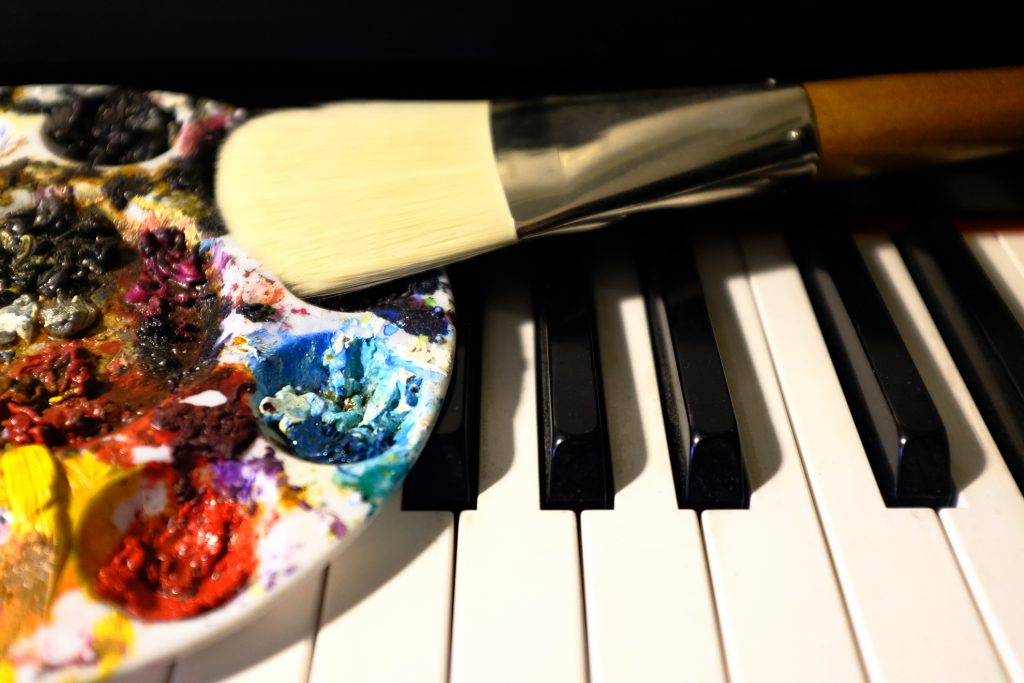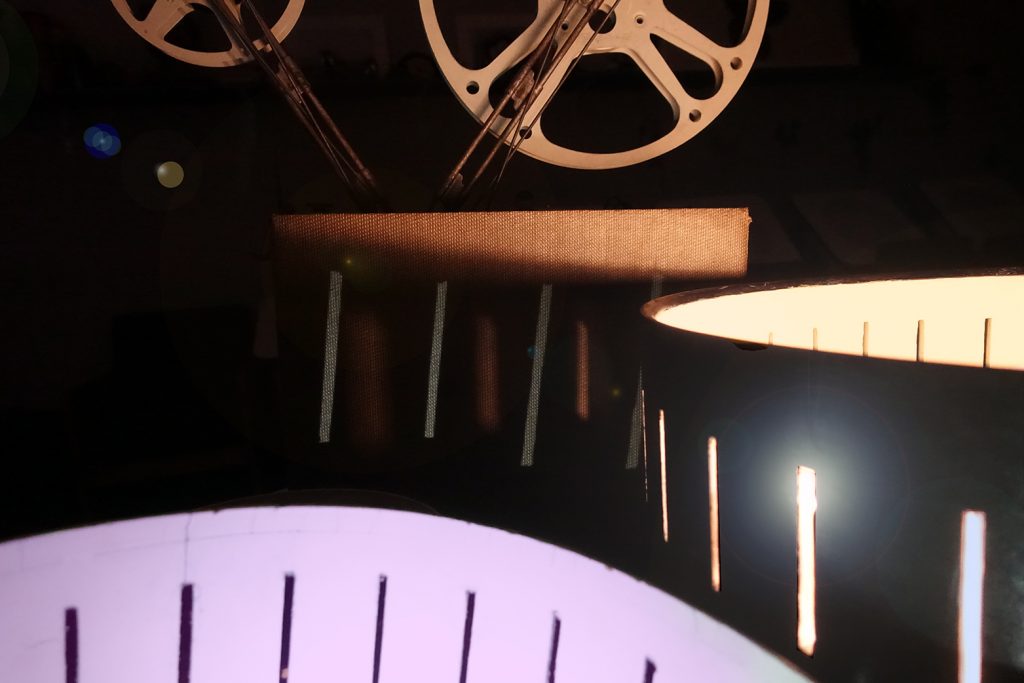Revisiting Conversations Regarding the Interdisciplinary Nature of the Art
“If the unity of art can be established with all the subject matters taught and exercised, then a real reconstruction of this world could be hoped for—more balanced and less dangerous.” —Lazlo Moholy-Nagy “The Contribution of the Arts to Social Reconstruction.”1943
Silly Symphonies. Merrie Melodies. Happy Harmonies and yes, Loony Tunes. The titles of these seminal franchises of animation’s Golden Age reveal something important about animation as an inherently interdisciplinary endeavor. A defining feature of the Golden Age of Animation is the planned precision involved in the pairing of music and image. The fact that the music and dialog was scored and recorded before the actual animation confirms its inextricable partnership with visual images, if not its primacy, in the animation production process. It may be argued that such animation was a form of synesthetic practice; it was the visualization of sound based symbiotically on the audialization of image.
While this fact is not new to animation professionals and scholars, it may be important to revisit this notion when teaching students. By deliberately framing animation as a form of synesthetic practice, especially during a time when colleges and universities seem increasingly interested in fostering interdisciplinary approaches to education, we may be able to develop multimodal approaches in a number of otherwise discrete disciplines.
While it is arguable that all design is synesthetic and that all professions and disciplines require the use of a number of modalities, the push towards specialization in a number of fields, which seems to have predominated since the industrial revolution, is being seriously questioned. In his book Range, David Epstein (2020) discusses in depth the importance of interdisciplinary approaches to a number of fields including medicine. He reports on a study conducted by Rita F. Redberg, which found that patients were more likely to survive cardiac arrest when heart specialists were away at a cardiology convention (see Redberg 2015). The reason suggested? Specialists may be too focused on specific training to be able to think through flexible and creative solutions based on the individual needs and situations of patients in the moment. This suggests a need to develop the traits of polymaths, who are people with a broad range of skills and knowledge.
Two things about this jump out as important to the animator. First, the origins of cinema and animation are generally attributed to physiologists and physicians. E. J. Marey, for example, invented the technology that has become what is known as the EKG, but he also developed chronophotography and used zoetropes to “synthesize time” in the pursuit of scientific knowledge rather than for entertainment purposes. His early discoveries and inventions later led to adaptation by Edison and others who envisioned the technology as a means of mass entertainment. Marey, on the other hand, used animation to further study anatomical movement and air currents. Animation’s origins and early motives are inextricably linked to science and medicine and not necessarily the visual arts, although the word ‘animation’ seems to have become somehow synonymous with visual entertainment.

The second thing that might jump out to a student of animation is that the animator is already dealing with a multimodal practice. The animator combines sound, images, technology, story, computer science, mathematics, and any number of other subjects in the creation of animated work. Animators are by definition dealing in an interdisciplinary endeavor.
As an undergraduate student in Charles Samu’s History of Animation class I recall vividly the disappointment expressed by a classmate when works by McLaren and Fischinger were presented. “We want more Bugs Bunny,” the student quipped aloud. I understood this at the time as a valid sentiment, even though I was blown away by these examples of brilliant “experimental” animation, particularly Norman McLaren’s drawn sounds. Even today, in discussions with colleagues and animation teachers, I often hear the lament that students seem hyper-focused on mastering existing stylistic tendencies rather than exploring the richer opportunities of creative expression and interdisciplinary thought that animation provides. It is almost as if many students gauge their own success by the degree to which they can skillfully mimic what already exists in order to be accepted into an industry that gives us rerun after sequel after franchise that look remarkably similar, made by a small number of behemoth studio systems where specialization is seen as key to production-line methods and labor practices.

Efforts to find connections between the senses in art has a long history, from the architecture of the classical and renaissance periods, Richard Wagner’s ‘gesamtkunstwerk,’ to the synesthetic paintings of Wassily Kandinsky and Agnes Martin, and Disney’s Fantasia (1940). In the 21st century, the opportunity to further explore these connections is rich. Animation, games, and interactive media have given the artist new tools, technologies, and materials that provide the means to synthesize otherwise (traditionally considered) discrete disciplines in art making to produce immersive, multisensory experiences. Because of its makeup, animation studies can be an important gateway to developing interdisciplinary thinking in any number of professions.
In Part II of this post, which will appear next week, I will attempt to explore a conceptual “periodic table” of creative concepts that might be used to open up dialog about the interrelatedness of art forms through animation and otherwise discrete disciplines, and investigate how such dialogs may be used to blunt the predominance of specialized thinking in favor of new ways of conceptualizing interdisciplinary modes of practice.
Stay tuned!
References
Braun, Marta (1994). Picturing Time: The Work of Etienne-Jules Marey (1830-1904). Chicago: U of Chicago.
Burgun, Keith (2017). Game Design Theory: A New Philosophy for Understanding Games. Natick, MA.: CRC.
Cytowic, Richard (2018). E. Synesthesia. Cambridge, MA: MIT.
Dobson, Terence (2017). Film Work of Norman McLaren. Eastleigh: John Libbey & Co.
Epstein, David (2020). RANGE: How Generalists Triumph in a Specialized World. New York: MacMillan.
Glissant, Edouard (2009). Poetics of Relation. Ann Arbor: U of Michigan.
Haverkamp, Michael (2013). Synesthetic Design: Handbook for a Multisensory Approach. Basel: BirkhaÌuser.
Redberg, Rita F. (2015). “Cardiac Patient Outcomes During National Cardiology”, MeetingsJAMA Intern Med, 75(2): 245.
Robby Gilbert is an Assistant Professor of Animation and chair of the Visual Arts Department at Northern Vermont University. He has worked extensively as an illustrator and an animator, and views animation as the synthesis of a variety of practices such as music, painting, drawing, dance, acting, storytelling, and technology. You can see some of his work by visiting www.robbygilbert.com.
